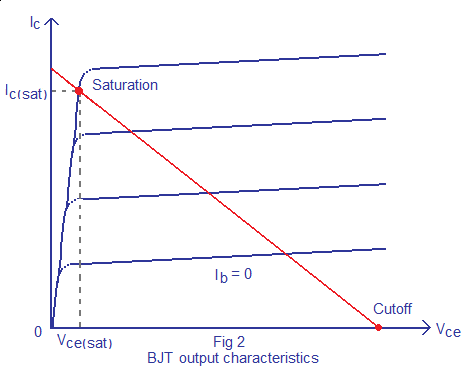The invention of transistor ushered in a new era in the field of electronics.The years between 1904-1947 saw the extensive use of vacuum diode in various electronic devices.
However in the year 1947 the three scientists William shockley,John bardeen and walter bratain invented the transistor in the bell laboratories.
The transistor was not only rugged in construction and more efficient it was also smaller in size as compared to the vacuum diode.
The transistor consists of a 3 layer device having two junctions.
The transistors find extensive application in computers ,television,mobile phones,industrial areas etc and their main function is curent amplification.
The transistors can be operated in 3 configurations:
1.Common base configuration:
The emitter base junction is forward biased and base collector junction is reverse biased.
The majority carriers move from the first layer into the middle layer where they are the minority carriers.Again they are pushed into the third layer.Thus the base current is negligibly small and the emitter current is almost equivalent to the collector current.

applications:
Common base configuration is commonly used in amplifiers.
2.Common emitter configuration:
In this configuration the emitter is connected in both the input and output circuits.
the base current is the input current and the collector current acts as the output current.
the gain is given by
beta = output current / input current
The gain thus is large and hence this configuration finds wide application in amplifiers.
3.Common collector
In common collector configution the collector is common to both input and output.
it finds applications in cascaded netwrks since it does not greatly change signals.
Input characteristics of transistor in common base configuration:


However in the year 1947 the three scientists William shockley,John bardeen and walter bratain invented the transistor in the bell laboratories.
The transistor was not only rugged in construction and more efficient it was also smaller in size as compared to the vacuum diode.
The transistor consists of a 3 layer device having two junctions.
The transistors find extensive application in computers ,television,mobile phones,industrial areas etc and their main function is curent amplification.
The transistors can be operated in 3 configurations:
1.Common base configuration:
The emitter base junction is forward biased and base collector junction is reverse biased.
The majority carriers move from the first layer into the middle layer where they are the minority carriers.Again they are pushed into the third layer.Thus the base current is negligibly small and the emitter current is almost equivalent to the collector current.

applications:
Common base configuration is commonly used in amplifiers.
2.Common emitter configuration:
In this configuration the emitter is connected in both the input and output circuits.
the base current is the input current and the collector current acts as the output current.
the gain is given by
beta = output current / input current
The gain thus is large and hence this configuration finds wide application in amplifiers.
3.Common collector
In common collector configution the collector is common to both input and output.
it finds applications in cascaded netwrks since it does not greatly change signals.
Input characteristics of transistor in common base configuration:


No comments:
Post a Comment